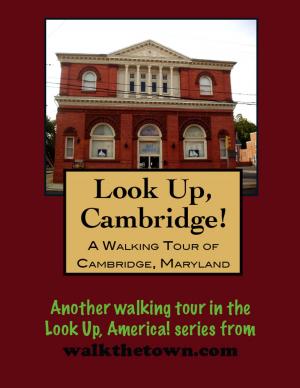| Author: | Doug Gelbert | ISBN: | 9781301706228 |
| Publisher: | Doug Gelbert | Publication: | December 12, 2012 |
| Imprint: | Smashwords Edition | Language: | English |
| Author: | Doug Gelbert |
| ISBN: | 9781301706228 |
| Publisher: | Doug Gelbert |
| Publication: | December 12, 2012 |
| Imprint: | Smashwords Edition |
| Language: | English |
There is no better way to see America than on foot. And there is no better way to appreciate what you are looking at than with a walking tour. Whether you are preparing for a road trip or just out to look at your own town in a new way, a downloadable walking tour is ready to explore when you are.
Each walking tour describes historical and architectural landmarks and provides pictures to help out when those pesky street addresses are missing. Every tour also includes a quick primer on identifying architectural styles seen on American streets.
There was settlement on the flatlands east of the Arkansas River by the Lochapoka and Creek tribes as early as the 1820s. When Indian Territory was established by the United States government in 1890 there was nothing remarkable about Tulsey Town, as the Creek Indians called it. Tulsa was officially incorporated on January 18, 1898 and as Oklahoma chugged towards statehood there was nothing to suggest the town would expand much beyond the 1,390 people recorded to live there in the 1900 census.
Everything changed on June 25, 1901 when the state’s first commercially viable oil well came in across the river at Red Fork (soon incorporated in the city limits.) In 1905 an even bigger strike was made 15 miles to the south in what became known as Glenn Pool. Texaco built the first oil refinery here in 1910 and Tulsa was on its way to being the “Oil Capital of the World.”
The population was 18,000 by 1910, 72,000 by 1920 and 141,000 by 1930. When the Great Depression slowed the boom, Tulsa had more buildings of ten or more stories than any city of its size in the world. Most of the skyscrapers were raised in the flamboyant Art Deco style and in the 1950s Time magazine anointed Tulsa the title of “America’s Most Beautiful City.”
Tulsa has never been shy with the wrecking ball, embarking on the state’s first urban renewal plan in 1959. But even though the oil bust of the 1980s caused the town to relinquish its title of “Oil Capital of the World” to Houston and sent several of its iconic Art Deco buildings into vacancy, many were left standing for us to see as we start our walking tour in a small patch of elevated open space in the center of the Tulsa skyline...
There is no better way to see America than on foot. And there is no better way to appreciate what you are looking at than with a walking tour. Whether you are preparing for a road trip or just out to look at your own town in a new way, a downloadable walking tour is ready to explore when you are.
Each walking tour describes historical and architectural landmarks and provides pictures to help out when those pesky street addresses are missing. Every tour also includes a quick primer on identifying architectural styles seen on American streets.
There was settlement on the flatlands east of the Arkansas River by the Lochapoka and Creek tribes as early as the 1820s. When Indian Territory was established by the United States government in 1890 there was nothing remarkable about Tulsey Town, as the Creek Indians called it. Tulsa was officially incorporated on January 18, 1898 and as Oklahoma chugged towards statehood there was nothing to suggest the town would expand much beyond the 1,390 people recorded to live there in the 1900 census.
Everything changed on June 25, 1901 when the state’s first commercially viable oil well came in across the river at Red Fork (soon incorporated in the city limits.) In 1905 an even bigger strike was made 15 miles to the south in what became known as Glenn Pool. Texaco built the first oil refinery here in 1910 and Tulsa was on its way to being the “Oil Capital of the World.”
The population was 18,000 by 1910, 72,000 by 1920 and 141,000 by 1930. When the Great Depression slowed the boom, Tulsa had more buildings of ten or more stories than any city of its size in the world. Most of the skyscrapers were raised in the flamboyant Art Deco style and in the 1950s Time magazine anointed Tulsa the title of “America’s Most Beautiful City.”
Tulsa has never been shy with the wrecking ball, embarking on the state’s first urban renewal plan in 1959. But even though the oil bust of the 1980s caused the town to relinquish its title of “Oil Capital of the World” to Houston and sent several of its iconic Art Deco buildings into vacancy, many were left standing for us to see as we start our walking tour in a small patch of elevated open space in the center of the Tulsa skyline...















